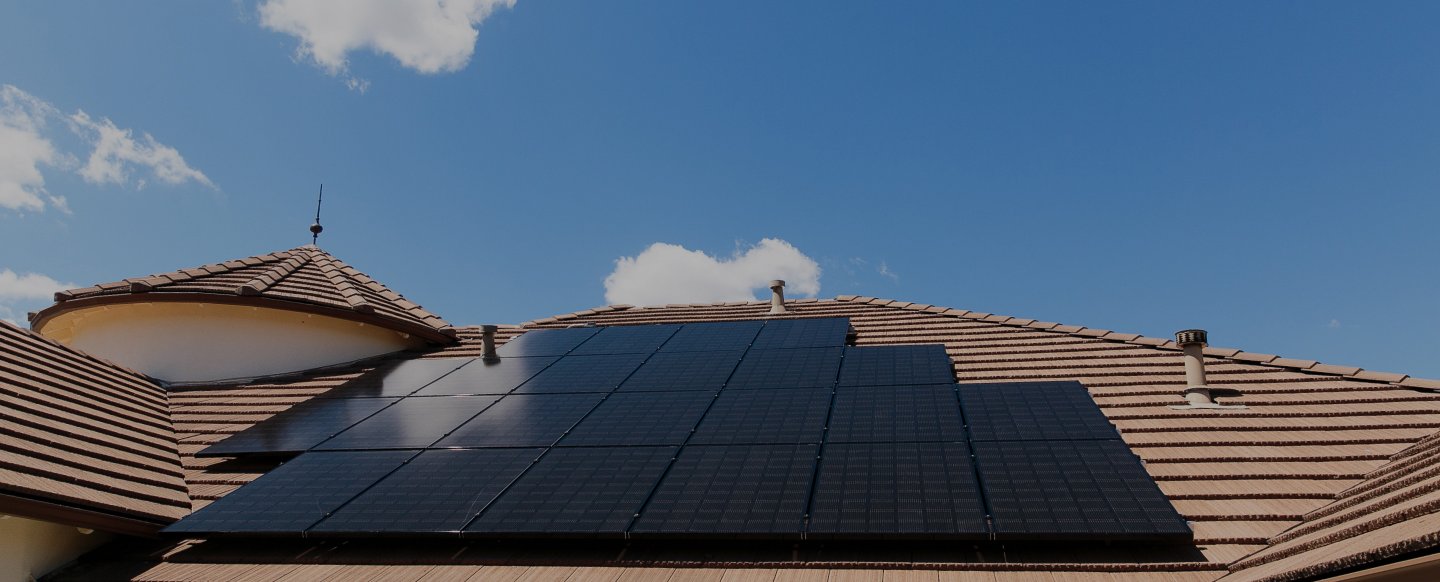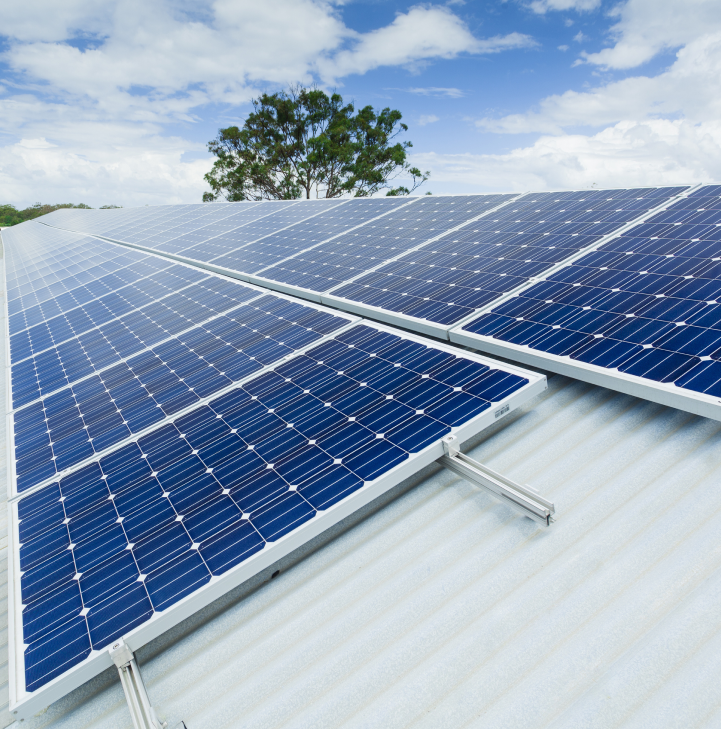
Financing & Incentives
Generous government incentives reduce the cost of installing solar and energy storage systems, and a variety of payment options make these systems financially accessible.
Jump to Category
Paying for Solar or Energy Storage
A variety of government incentive programs defray a significant piece of the cost to install a solar energy system and/or a solar energy storage system. To pay for the remainder, homeowners and commercial building owners have various options, including some that don’t require any upfront out-of-pocket expense. Typical payment methods are:

Cash

No Money Down Loan

Lease or Power Purchase Agreement (PPA)
Cash
Paying cash for solar and/or solar energy storage provides a high return on investment with very low risk, which is a rare and valuable scenario as any financial expert can tell you. It also provides the greatest return on your investment.
Loan
Paying with a bank loan is a great way to go if you don’t have the cash to cover the full price tag. Some loans do not require a down payment. You own the system and benefit from 100% of the electricity savings and the Investment Tax Credit, as if you paid cash.
Loan
Paying with a bank loan is a great way to go if you don’t have the cash to cover the full price tag. Some loans do not require a down payment. You own the system and benefit from 100% of the electricity savings and the Investment Tax Credit, as if you paid cash.


Leases & PPAs
Leases and Power Purchase Agreements (PPA) also enable you to install solar and/or energy storage with no upfront cost. A third party owns the system and the home or business owner benefits from electricity that is less expensive than the utility’s.
Citadel experts can present your options and help determine and secure the best financing method for your personal or business situation.
Read more about the payment methods in our blog post How to Pay for a Solar or Energy Storage System.
Paying for a New Roof
Many homeowners and business owners take advantage of home improvement or other loans to finance a new roof investment. Citadel offers this type of loan through one of our financial partners and can help you apply, or even complete your application for you.

Incentives for Solar Energy Systems
Federal and state governments have implemented programs that make it easier financially to install solar energy systems at your home or business. Some leaders see renewable energy as a major weapon in the battle against global warming and a necessary part of any effort to reach ambitious climate change goals. Others do it to encourage job growth.
The main solar incentive programs relevant to Californians, which are described further below, are:
1. Net metering
2. The Investment Tax Credit
3. Accelerated or bonus depreciation (for commercial customers).
Incentives for Solar Energy Systems
Federal and state governments have implemented programs that make it easier financially to install solar energy systems at your home or business. Some leaders see renewable energy as a major weapon in the battle against global warming and a necessary part of any effort to reach ambitious climate change goals. Others do it to encourage job growth.
The main solar incentive programs relevant to Californians, which are described further below, are:
1. Net metering
2. The Investment Tax Credit
3. Accelerated or bonus depreciation (for commercial customers).

Incentives for Solar Energy Storage Systems
State government leaders also support solar energy storage because they recognize the enormous environmental and economic benefits the technology presents. The main storage incentives relevant to California businesses and homeowners, which are described further below, are:
- The Investment Tax Credit
- Bonus or accelerated depreciation (for commercial customers)
- The Self-Generation Incentive Program (SGIP)

Incentives for Solar Energy Storage Systems
State government leaders also support solar energy storage because they recognize the enormous environmental and economic benefits the technology presents. The main storage incentives relevant to California businesses and homeowners, which are described further below, are:
- The Investment Tax Credit
- Bonus or accelerated depreciation (for commercial customers)
- The Self-Generation Incentive Program (SGIP)
Solar Net Metering
The more money solar energy systems put in citizens’ pockets, the more people will be encouraged to install solar. That’s why California has a net metering (also called net energy metering or NEM) policy, which ensures that homeowners and business owners benefit from all the solar energy they produce, whether they use it or not.
Here’s how net metering works:
- Some solar electricity you produce is used in your home or business right then and there, if needed. The utility never sees that.
- Solar electricity you produce but don’t need at the time flows into the utility grid for use by others, and you capture credits.
- When your solar isn’t producing enough for your needs, you draw electricity from the utility in the “traditional” way.
- The utility keeps track of how much traditional electricity you take from them, and how much solar electricity you send to them.
- Over a 12-month period, you only pay for the difference between the electricity you drew from the grid and the electricity you sent into the grid. In other words, you get credit for that extra solar you made but did not use. This helps your solar investment pay for itself that much more quickly.
(If you want to hang onto your extra solar electricity rather than sending it into the utility’s grid, consider installing a solar energy storage system.)
The Investment Tax Credit for Solar and Energy Storage
The Investment Tax Credit, or ITC as it’s called, is available for both solar energy systems and solar energy storage systems, and to both homeowners and business owners.
This generous incentive essentially pays you 30% of the cost of installing the system(s) including equipment, permits and inspections, and labor. People who can’t use the full ITC benefit in the first year can carry over the remaining credit to the following year.
ITC “Stepdown” Schedule
| For Homeowners | For Businesses | |
| 2022 | 30% | 30% |
| 2023 |
22% |
22% |
| 2024 | 0% | 10% |

How the Solar Investment Tax Credit Works
When you file your personal or business federal income tax return for the year in which your solar energy system or solar energy storage system was turned on, you claim a tax credit that reduces the total amount of taxes you owe.
It’s important to note that this is a tax credit, not a tax deduction. Deductions reduce your taxable income so you pay a bit less tax. A credit is worth a dollar-for-dollar reduction in what you pay the IRS. Let’s look at an example:
If your solar costs $25,000, you qualify for a $6,500 tax credit. So if you owe $18,000 in taxes when tax time comes around, you would deduct your $6,500 credit and only pay $11,500. It’s real money in the bank, and a wonderful way to celebrate going solar.
To claim your ITC, you or your tax preparer should use Form 5695 for the Residential Energy Credit.

Accelerated Depreciation for Commercial Solar
In addition to the Investment Tax Credit, businesses that install solar energy systems and solar energy storage systems often receive another financial incentive: bonus or accelerated depreciation. Under the Modified Accelerated Cost Recovery System (MACRS), equipment investments can be depreciated on tax returns using a much shorter time frame than the standard “useful life of the equipment”. Accelerated depreciation is roughly five years. A current bonus depreciation option allows full depreciation in the first year. Both translate into lower tax payments and faster payback of your solar investment.
A number of variables affect the depreciation benefit. Consult your tax professional for information on the most current depreciation options and which of those apply to your business and your investment.
How the Solar Investment Tax Credit Works
When you file your personal or business federal income tax return for the year in which your solar energy system or solar energy storage system was turned on, you claim a tax credit that reduces the total amount of taxes you owe.
It’s important to note that this is a tax credit, not a tax deduction. Deductions reduce your taxable income so you pay a bit less tax. A credit is worth a dollar-for-dollar reduction in what you pay the IRS. Let’s look at an example:
If your solar costs $25,000, you qualify for a $6,500 tax credit. So if you owe $18,000 in taxes when tax time comes around, you would deduct your $6,500 credit and only pay $11,500. It’s real money in the bank, and a wonderful way to celebrate going solar.
To claim your ITC, you or your tax preparer should use Form 5695 for the Residential Energy Credit.


Accelerated Depreciation for Commercial Solar
In addition to the Investment Tax Credit, businesses that install solar energy systems and solar energy storage systems often receive another financial incentive: bonus or accelerated depreciation. Under the Modified Accelerated Cost Recovery System (MACRS), equipment investments can be depreciated on tax returns using a much shorter time frame than the standard “useful life of the equipment”. Accelerated depreciation is roughly five years. A current bonus depreciation option allows significant depreciation in the first year. Both translate into lower tax payments and faster payback of your solar investment.
A number of variables affect the depreciation benefit. Consult your tax professional for information on the most current depreciation options and which of those apply to your business and your investment.
Self-Generation Incentive Program (SGIP) for Energy Storage
The Self-Generation Incentive Program (SGIP) provides rebates for “advanced energy storage” (AES) systems, including residential and commercial solar energy storage systems. The program is overseen by the California Public Utilities Commission and funded through a surcharge on California electric bills. The rebate can be quite generous but the availability of funding varies by utility and the application process can be complex. The experts at Citadel assist with the SGIP rebate process for our solar energy storage customers.

More Resources
Beginner’s Guide to Solar Energy Storage Systems »
More about time-of-use (TOU) rates from the California Public Utilities Commission »
More about demand rates from the California Public Utilities Commission »
FAQ on storage for homeowners »
FAQ on storage for businesses »